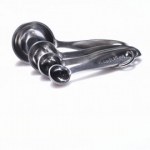 If you’re a patient of gastric bypass or lap band in Salt Lake City, then you understand the importance of portion control. Such weight loss surgeries involve reducing the size of the stomach, and therefore how much food the stomach can hold at once, helping you to eat less, feel more satisfied and lose weight. However, many people might still have difficulty managing perfect portion sizes and often confuse serving size with what portion actually means. Portions will vary depending on your current stomach size and type of surgery, but will typically look like this:
If you’re a patient of gastric bypass or lap band in Salt Lake City, then you understand the importance of portion control. Such weight loss surgeries involve reducing the size of the stomach, and therefore how much food the stomach can hold at once, helping you to eat less, feel more satisfied and lose weight. However, many people might still have difficulty managing perfect portion sizes and often confuse serving size with what portion actually means. Portions will vary depending on your current stomach size and type of surgery, but will typically look like this:
- After gastric bypass the stomach can hold approximately ½ cup to one cup of chewed food at a time
- After Lap Band the stomach can hold approximately ¼ cup or two ounces of food at a time
Serving size is the term coined by the USDA and refers to the amount of food recommended for consumption at one sitting. Serving sizes for particular food are typically found on their nutrition labels or panels. However, portion refers to the amount of food or beverage a person chooses to consume. Before weight loss surgery, you may have been consuming larger portions than the serving size recommended, which often leads to overeating and ultimately, weight gain.
How to Practice Portion Control
Portion control refers to the limitation of the amount of food one eats during a single sitting. To practice portion control you have to be aware of how much food you are actually consuming and the nutritional value of each portion of food, like the number of calories and grams of fat and sugar it contains. After undergoing a bariatric surgery procedure in which the stomach size is reduced, portion control will become a necessity. Some complications can arise from exceeding the amount of food your stomach can hold at a given time such as pouch stretching, band slippage and reduced weight loss or weight gain.
Here are some tips for keeping portions under control after bariatric surgery
- Accurately measure portions with tools. You may remember how fun it used to be to help your mother or grandmother bake in the kitchen as you measured out ingredients and add them one by one. Don’t hesitate to seek a little help from measuring tools to help you accurately quantify portions for meals. You can use tools such as measuring cups for solids and liquids, tablespoons, teaspoons or even a food scale.
- Invest in portion control dishware. Make managing portions easy with the help of specifically designed bowls and plates with built-in measuring guidelines that allow you to physically see how much food goes into your dish. Most portion control dishware sets range in portion sizes from ½ cup to 2 cups and come in a variety of fun materials and colors. Check online to find a set that’s right for you or ask someone in your bariatric surgery support group if they recommend a particular brand.
- Eat from smaller plates with smaller utensils. When you don’t have access to your precise measuring tools, try to place portions on the smallest plate available and eat with smaller sized utensils. This trick will help you keep portions under control, but remember not to fill up your plate more than once.
- Learn to approximate serving size. You can easily learn to determine serving size by comparing your portion to normal household items. For example, three ounces of lean meat is about the size of a deck of cards or cassette tape. One ounce of cheese is about the size of a domino, one teaspoon of peanut butter equals one die, one cup is about the size of a tennis ball and one-half cup is about the size of a racquet ball.
Learning portion control will soon become second nature for bariatric surgery patients, but until then, a little bit of practice can go a long way. Use some of the above portion control tips to manage your portions for the time being and don’t hesitate to ask your bariatric surgeon in Salt Lake City for more advice on controlling portions.


